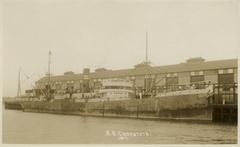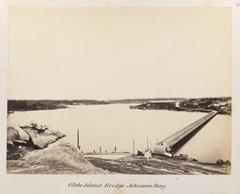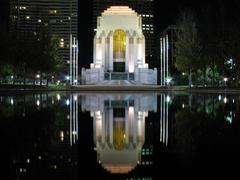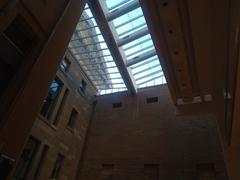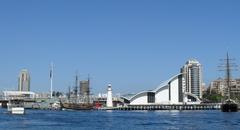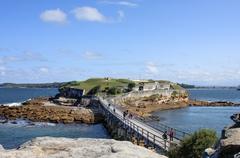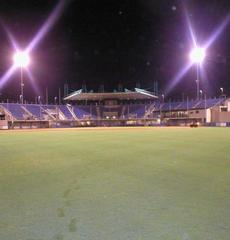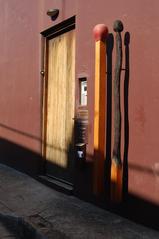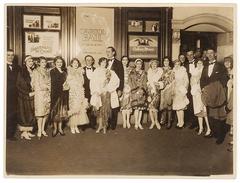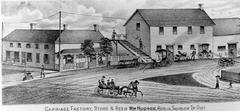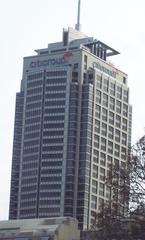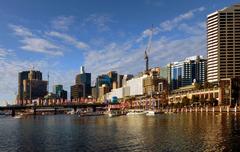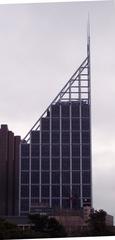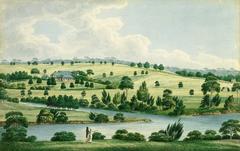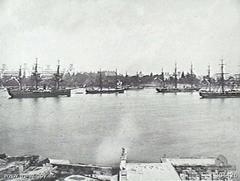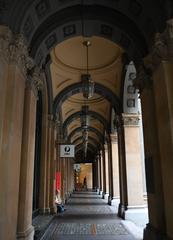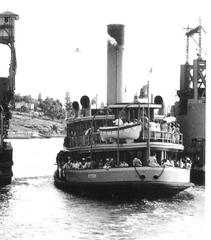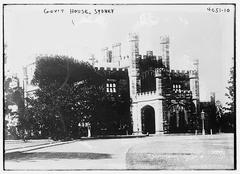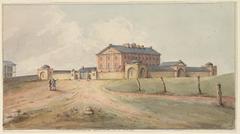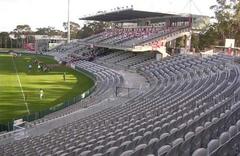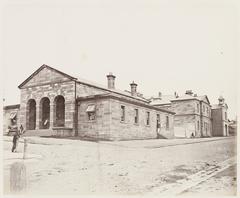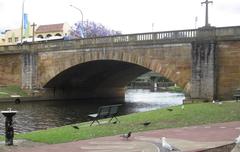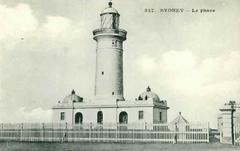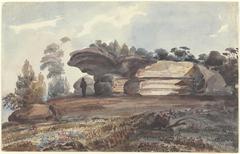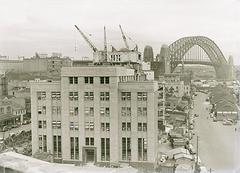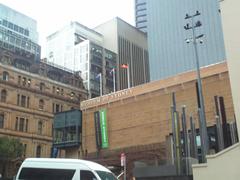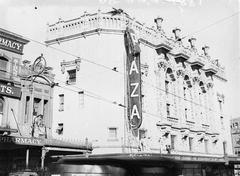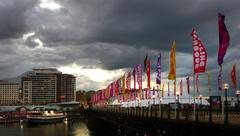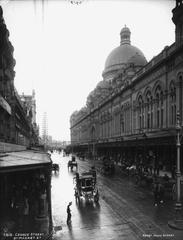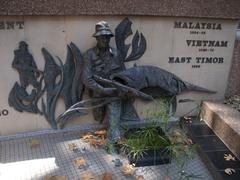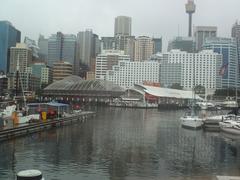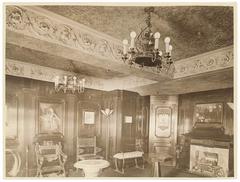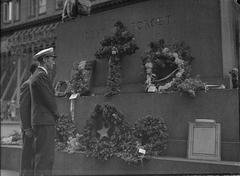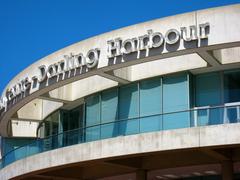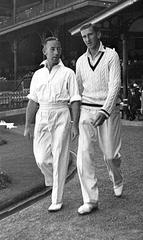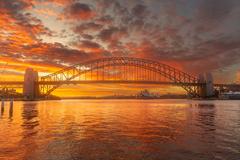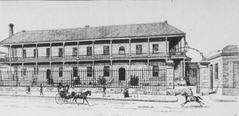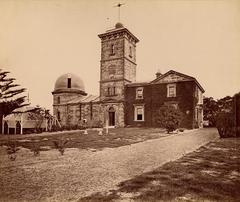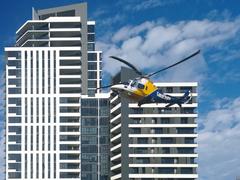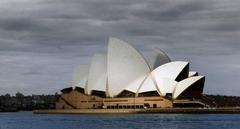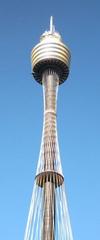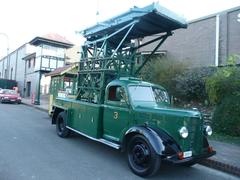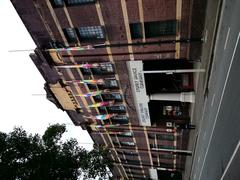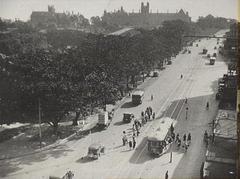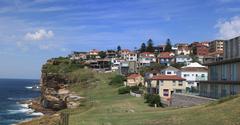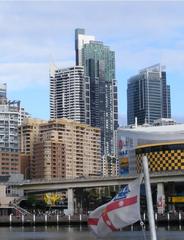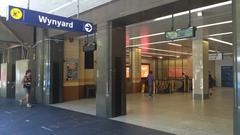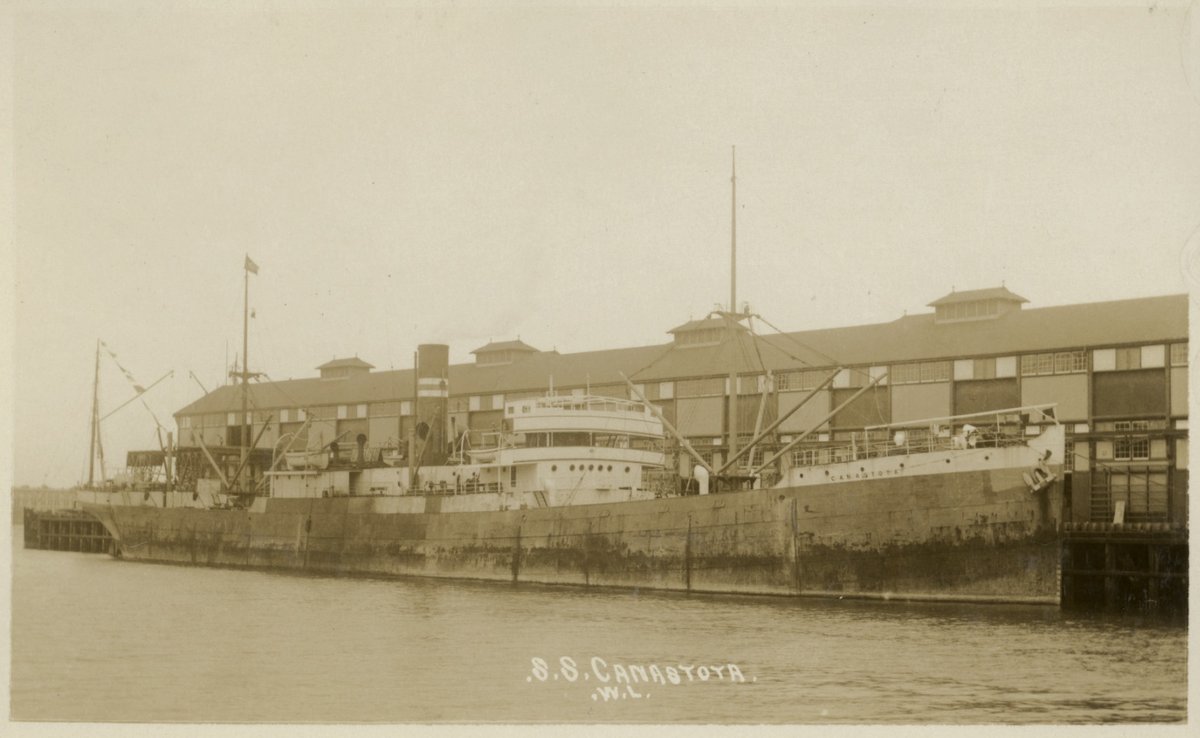
Visiting Woolloomooloo Finger Wharf: Hours, Tickets, and History
Date: 31/07/2024
Introduction
The Woolloomooloo Finger Wharf, an iconic heritage-listed landmark in Sydney, Australia, seamlessly blends historical significance with contemporary luxury. Constructed between 1911 and 1915 by the Sydney Harbour Trust, it was initially designed to support the burgeoning demands of overseas shipping. Today, it stands as the largest wooden-piled structure globally, boasting a significant architectural and historical legacy (Sydney Point, Wikipedia). Visitors are drawn to its storied past, which includes pivotal roles in both World Wars and its transformation from a derelict site to a bustling precinct featuring upscale dining, luxurious accommodations, and vibrant cultural activities. This comprehensive guide aims to provide all essential details for planning a visit, whether you’re a history enthusiast or a casual tourist, ensuring an enriching experience at this remarkable site.
Table of Contents
- Introduction
- Historical Background
- Visitor Information
- Modern-Day Attractions
- Accessibility and Transportation
- Visitor Tips
- Nearby Attractions
- FAQ
- Conclusion
Historical Background
Early Development and Construction
The Woolloomooloo Finger Wharf, also known as the Woolloomooloo Wharf, is a significant historical landmark in Sydney, Australia. Its construction began in 1911 and was completed in 1915 by the Sydney Harbour Trust. The Trust was established in 1901 with the aim of modernizing Sydney’s waterfront facilities and bringing order to the foreshore (Wikipedia). The wharf was designed to handle the increasing demands of overseas shipping from Europe, America, and the Pacific, making it a crucial hub for maritime commerce.
Architectural Significance
The Woolloomooloo Wharf is renowned for its architectural significance. At 400 meters (1,310 feet) long and 63 meters (210 feet) wide, it stands on 3,600 piles, making it the largest wooden-piled building in the world (Sydney Point). Its massive scale was unprecedented at the time and continues to impress visitors today. The wharf’s design includes industrial conveyor-belt relics and other historical elements that are etched into its glass walls, providing a glimpse into its storied past (Lonely Planet).
Role in Maritime and Military History
The Woolloomooloo Wharf played a pivotal role in both maritime and military history. During its early years, the wharf was a bustling center for commercial shipping, handling goods from various parts of the world. It also served as a departure point for soldiers heading to the Boer War in 1902 and continued to be a significant site for troop movements throughout the 20th century (Dictionary of Sydney).
The nearby Garden Island base of the Royal Australian Navy further cemented Woolloomooloo’s importance in military operations. The old colonial naval buildings at Garden Island were handed over to the newly formed Australian Navy, which established its permanent national headquarters there. This proximity to the naval base meant that the wharf was frequently visited by sailors and officers, adding to its vibrant atmosphere.
Decline and Dereliction
By the 1970s, the influence of the Woolloomooloo Wharf began to wane as more modern wharves were preferred for shipping activities. The wharf fell into disuse and disrepair, and by the 1980s, it lay derelict and empty. In 1987, the state government decided to demolish the wharf, but this decision was met with significant public opposition (Wikipedia).
Preservation Efforts and Redevelopment
Public sentiment strongly favored the preservation of the Woolloomooloo Wharf. A green ban was imposed on the structure, preventing its demolition. Public meetings and campaigns to save the wharf multiplied, highlighting its historical and cultural significance. Eventually, the government relented, and plans for demolition were scrapped (Dictionary of Sydney).
In 1999, the Walker Corporation and Multiplex completed a $300 million makeover of the wharf. This redevelopment transformed the derelict structure into a vibrant precinct featuring over 300 apartments, a hotel, and a marina. The wharf now houses some of the world’s wealthy residents and offers a range of upscale dining and accommodation options (Sydney Point).
Cultural and Social Impact
The redevelopment of the Woolloomooloo Wharf has had a significant cultural and social impact on the area. The wharf is now home to Artspace, an independent, not-for-profit contemporary art center located in the heritage-listed Gunnery Building. Since the early 1980s, Artspace has been a critical context for Australian and international artists, curators, and writers, fostering new ideas and practices in contemporary art and culture (Wikipedia).
The wharf’s transformation has also led to gentrification in the surrounding areas. While Woolloomooloo was originally a working-class district, the construction of expensive housing developments on the wharf has brought significant changes. Despite this, areas of public housing still exist, with 22% of homes in the 2011 postcode owned by Housing NSW (Wikipedia).
Visitor Information
Visiting Hours and Tickets
The Woolloomooloo Finger Wharf is open to the public all year round. While the general area does not require tickets for entry, specific attractions such as the Artspace gallery may have their own visiting hours and ticketing information. It is advisable to check individual attractions’ websites for the most accurate and up-to-date information.
Travel Tips
- Accessibility: The wharf is accessible by public transport, with several bus routes stopping nearby. It is also within walking distance from Kings Cross train station.
- Nearby Attractions: Visitors can explore the nearby Royal Botanic Garden, Sydney Opera House, and the Art Gallery of New South Wales for a more comprehensive cultural experience.
- Best Time to Visit: The wharf is a year-round destination, but visiting during weekdays can help avoid weekend crowds.
Special Events and Guided Tours
The Woolloomooloo Wharf occasionally hosts special events and guided tours that provide deeper insights into its historical and cultural significance. Check official tourism websites for upcoming events and tour schedules.
Photographic Spots
For photography enthusiasts, the wharf offers stunning views of the Sydney CBD skyline, especially at sunset. The marina and the heritage architecture also provide excellent backdrops for memorable photos.
Modern-Day Attractions
Dining and Culinary Experiences
Today, the Woolloomooloo Wharf is a popular destination for both locals and tourists. It features a range of high-end restaurants, bars, and hotels, including the award-winning Water Bar and the Blue Hotel, also known as the Ovolo Woolloomooloo. The wharf’s eateries offer a diverse culinary experience, with top restaurants like Manta, China Doll, and Otto serving a variety of cuisines (Sydney Point).
Visitors can also enjoy stunning views of the Sydney CBD skyline from the strategically positioned eateries along the wharf. The area is easily accessible and is perfect for family visits, offering a blend of historical charm and modern luxury (Sydney Point).
Accommodation Options
For those looking to stay overnight, Woolloomooloo Finger Wharf offers luxurious accommodation options that combine comfort with historical charm.
- Ovolo Woolloomooloo: This boutique hotel is located within the wharf itself, offering a unique blend of heritage architecture and modern amenities. Guests can enjoy spacious rooms, a fitness center, and complimentary breakfast (Ovolo Woolloomooloo).
- The Blue Hotel: Another excellent option, The Blue Hotel provides stylish rooms with waterfront views. The hotel features a bar, restaurant, and easy access to nearby attractions (The Blue Hotel).
Cultural and Recreational Activities
Woolloomooloo Finger Wharf is not just about dining and accommodation; it also offers a range of cultural and recreational activities.
- Art Exhibitions: The wharf frequently hosts art exhibitions showcasing local and international artists. These exhibitions provide a platform for contemporary art and are a must-visit for art enthusiasts.
- Walking Tours: Guided walking tours are available, offering insights into the wharf’s history and architecture. These tours often include visits to nearby landmarks such as the Royal Botanic Garden and the Art Gallery of New South Wales.
- Harbor Cruises: Several companies offer harbor cruises departing from Woolloomooloo Bay. These cruises provide a unique perspective of Sydney’s iconic landmarks, including the Sydney Opera House and Harbour Bridge.
Accessibility and Transportation
Woolloomooloo Finger Wharf is easily accessible by various modes of transportation, making it convenient for visitors.
- Public Transport: The wharf is well-connected by public transport. The nearest train station is Kings Cross, which is a short walk away. Several bus routes also service the area, providing easy access to and from the city center.
- Parking: For those driving, there are several parking options available nearby. The Domain Car Park offers secure parking and is within walking distance of the wharf.
- Walking and Cycling: The wharf is pedestrian-friendly, with well-maintained walkways and cycling paths. Visitors can enjoy a leisurely stroll or bike ride along the waterfront, taking in the scenic views.
Visitor Tips
To make the most of your visit to Woolloomooloo Finger Wharf, consider the following tips:
- Plan Ahead: Given the popularity of the dining establishments, it is advisable to make reservations in advance, especially during weekends and holidays.
- Dress Code: Some restaurants have a smart-casual dress code, so be sure to check the requirements before your visit.
- Weather Considerations: Sydney’s weather can be unpredictable. It is recommended to check the weather forecast and dress accordingly. Sunscreen and hats are advisable during the summer months.
- Photography: The wharf offers numerous photo opportunities. Whether it’s the historic architecture or the stunning harbor views, don’t forget to bring your camera or smartphone.
- Local Events: Keep an eye out for local events and festivals that may coincide with your visit. These events often feature live music, food stalls, and cultural performances, adding to the overall experience.
Nearby Attractions
While Woolloomooloo Finger Wharf itself is a major attraction, there are several nearby sites worth exploring.
- Royal Botanic Garden: Located just a short walk from the wharf, the Royal Botanic Garden is a lush oasis in the heart of the city. It offers a variety of themed gardens, walking trails, and panoramic views of Sydney Harbour (Royal Botanic Garden).
- Art Gallery of New South Wales: This major public gallery is home to an extensive collection of Australian, European, and Asian art. It also hosts temporary exhibitions and cultural events (Art Gallery of New South Wales).
- Mrs Macquarie’s Chair: A historic landmark offering one of the best vantage points for photographing the Sydney Opera House and Harbour Bridge. It is located within the Royal Botanic Garden and is a popular spot for tourists.
FAQ
What are the visiting hours of Woolloomooloo Finger Wharf?
The wharf is open to the public all year round. Specific attractions within the wharf may have their own hours, so it’s best to check their websites.
Do I need tickets to visit Woolloomooloo Finger Wharf?
No tickets are required to visit the general area of the wharf. However, individual attractions like Artspace may have their own ticketing policies.
What are some nearby attractions?
Nearby attractions include the Royal Botanic Garden, Sydney Opera House, and the Art Gallery of New South Wales.
Is the wharf accessible by public transport?
Yes, the wharf is accessible by several bus routes and is within walking distance from Kings Cross train station.
Are there guided tours available?
Yes, the wharf occasionally hosts guided tours. Check official tourism websites for schedules and booking information.
Conclusion
The Woolloomooloo Finger Wharf stands as a testament to Sydney’s rich maritime history and its ability to adapt and reinvent itself. From its early days as a bustling shipping hub to its decline and eventual resurgence as a luxury residential and dining precinct, the wharf’s journey reflects the broader narrative of Woolloomooloo’s transformation. Today, it remains a vibrant and significant part of Sydney’s cultural and historical landscape. Whether you’re exploring its architectural marvels, indulging in culinary delights, or simply soaking in the panoramic views of Sydney’s skyline, the wharf promises a memorable experience (Simon Fieldhouse, MySydneyDetour). As it continues to attract both locals and tourists, the Woolloomooloo Finger Wharf remains a vibrant and integral part of Sydney’s cultural landscape, reflecting the city’s rich history and its ability to adapt and reinvent itself.
References
- Wikipedia. Woolloomooloo. https://en.wikipedia.org/wiki/Woolloomooloo
- Sydney Point. Woolloomooloo Wharf. https://www.sydneypoint.com.au/attractions/woolloomooloo-wharf/
- Lonely Planet. Woolloomooloo Wharf. https://www.lonelyplanet.com/australia/sydney/kings-cross-to-potts-point/attractions/woolloomooloo-wharf/a/poi-sig/367463/1324163
- Dictionary of Sydney. Woolloomooloo. https://dictionaryofsydney.org/entry/woolloomooloo
- MySydneyDetour. Discover the Finger Wharf. https://mysydneydetour.com/landmark/finger-wharf/
- Simon Fieldhouse. Finger Wharf Woolloomooloo. https://simonfieldhouse.com/sydney-icons/finger-wharf-woolloomooloo/
- Time Out. Woolloomooloo Wharf. https://www.timeout.com/sydney/things-to-do/woolloomooloo-wharf
- China Doll. https://www.chinadoll.com.au/
- Otto Ristorante. https://www.ottoristorante.com.au/
- Manta Restaurant & Bar. https://mantarestaurant.com.au/
- Ovolo Woolloomooloo. https://ovolohotels.com/ovolo/woolloomooloo/
- The Blue Hotel. https://www.tfehotels.com/en/hotels/the-blue-hotel/
- Royal Botanic Garden. https://www.rbgsyd.nsw.gov.au/
- Art Gallery of New South Wales. https://www.artgallery.nsw.gov.au/
